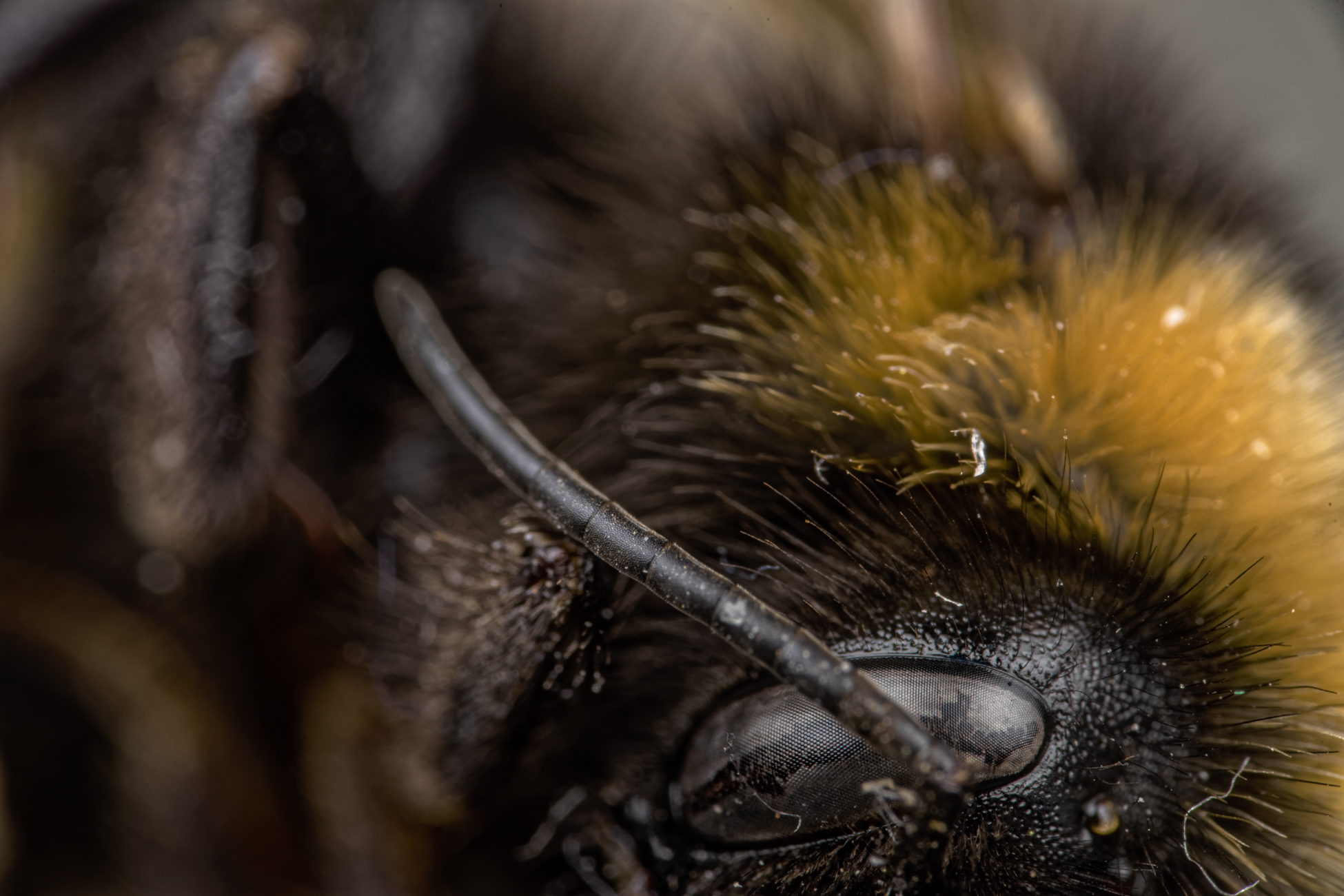Another faulty recollection. Turns out it was probably
parchment paper (90gsm). There again, I see "
anitas A4 Plain Parchment Vellum Paper", so perhaps my "parchment paper" is "Vellum Paper". And then again, I think I've heard Thomas Shahan refer to "tracing paper" in one of his videos where he mentioned his diffusion for the KX800, and I see "
Vellum Translucent Tracing Paper". All very confusing. Who knows what I'm using.
Still, I built a new pair of diffusers this morning using whatever this stuff is. They lose loads of light, over three stops from just two layers of the paper (as against around 2 stops with 5 layers of my "plastic paper". However, there is enough light for my purposes with the flash heads front-mounted, and the diffusion looks very promising from my test shots of the dead bee that I found several days ago (concentrating on the eyes, which are difficult).
1666 1 Small round 2-layer parchment paper diffusers by
gardenersassistant, on Flickr
1666 2 Sample test shot. 4x magnification with A7ii by
gardenersassistant, on Flickr


















